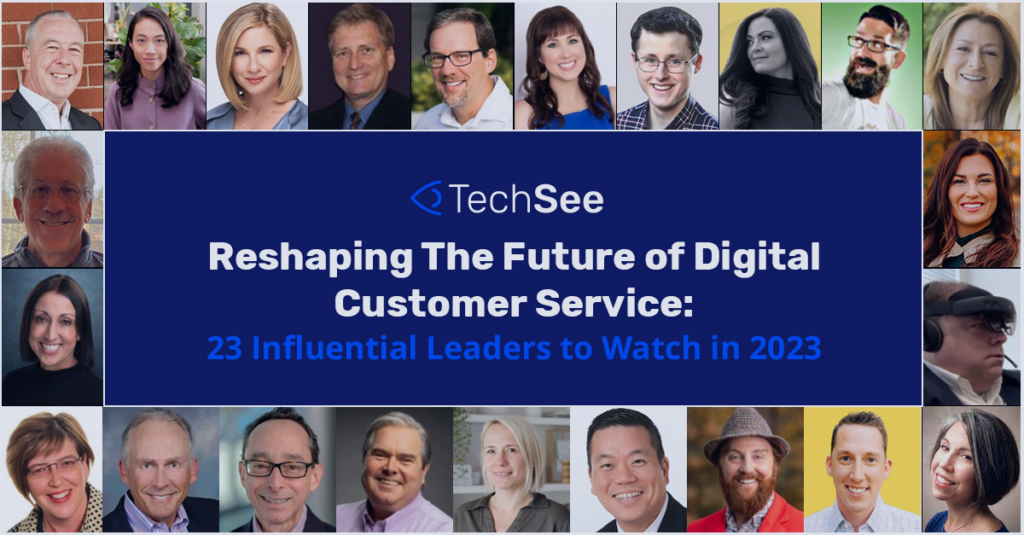Contents
- 1. Is “Agentless” AI Still the Goal?
- 2. Is “Voice-First” Still the Right Approach for the AI Roadmap?
- 3. Is AI Really Lowering Service Costs or Just Moving Them Around?
- 4. Are We Measuring AI’s Impact with the Right Metrics?
- 5. Multimodality: A Roadmap or a Requirement?
- 6. What Will the Next Generation of Contact Center Agents Look Like?
- Conclusion
- FAQs
- 1. How can companies decide where to start when building an AI roadmap for contact centers?
- 2. How can businesses make sure AI supports customer trust and brand values?
- 3. What signs show that an AI strategy isn’t working as planned?
- 4. Why are data connections so important for AI strategies for customer experience?
- 5. How will the role of customer service agents change as AI grows?
Across the industry, customer experience leaders are asking many of the same questions. Everyone is experimenting with AI in customer service, yet few feel certain about where the real value lies. Some organizations are scaling agent-assist tools; others are rewriting how they measure self-service.
After hundreds of conversations with CX executives, six topics keep surfacing. These are not theoretical debates about pilots or proofs of concept. Instead, these practical discussions are happening inside service organizations that are already using AI in production.
In this article, we will discuss the top 6 discussions shaping the AI roadmap for customer experience. Plus, we’ll offer insights on redefining automation goals to embracing multimodal intelligence and reimagining the role of human agents.
1. Is “Agentless” AI Still the Goal?
A few years ago, the race to automate everything reached its peak. Many contact centers cut headcount aggressively, betting on fully digital agents. Then came the quiet reversal as companies began rehiring to restore empathy, quality, and trust. The takeaway from that period is clear. That period revealed what many now call the mirage of agentless AI in customer service, the mistaken belief that automation alone could replace human connection.
The sustainable model is agent-augmented, not agentless. AI automates routine tasks such as billing inquiries and password resets. On the other hand, people focus on conversations that shape long-term relationships. AI helps summarize context, surface insights, and speed up decisions, but it cannot replace judgment or empathy.
Takeaway: The future is not about removing people from service but about removing friction from their work.
2. Is “Voice-First” Still the Right Approach for the AI Roadmap?
Many organizations still treat Artificial Intelligence development as a sequence. Start with text and voice, and bring in visuals later. On a slide that seems like maturity, yet in practice, it fragments the customer journey.
Context is what connects experiences, and context begins with sight. Humans learn to see before we speak or read, and AI benefits from the same order. Systems that understand only words or sounds lack visibility into what is really happening. That is why simple questions like “Why is my Wi-Fi weak in the bedroom?” or “Why won’t my washing machine start?” often end in a technician visit.
These are not language failures. When observed carefully, these are context failures. A modern AI roadmap for customer service should integrate visual, voice, and text capabilities from the start. This means that each channel informs the other.
Visual intelligence gives Voice AI the grounding it needs to diagnose, explain, and verify outcomes with confidence. The result is faster resolutions, fewer dispatches, and experiences that feel more natural for both support agents and customers.
Takeaway: A voice-first roadmap limits AI’s potential. Integrating visual intelligence early builds a unified foundation for effective, multimodal service.
3. Is AI Really Lowering Service Costs or Just Moving Them Around?
Reducing costs remains a key objective for service leaders, but the results are often uneven. Cutting 30 percent of calls at two dollars each looks efficient until dispatches rise by five percent at two hundred dollars per visit. The apparent savings disappear.
The apparent savings disappear. True efficiency is achieved when AI optimizes the entire service system, not a single channel. The real gains come from preventing repeat contacts, avoiding field visits, and confirming fixes remotely.
Organizations that connect contact-center with field-service cost structures see the full picture. They can identify where a small automation upstream prevents an expensive dispatch downstream. Plus, they can see where orchestration delivers a compounding effect on cost and satisfaction.
Takeaway: The right metric is not call reduction but cost per resolution across the customer journey. Savings measured narrowly rarely hold.
4. Are We Measuring AI’s Impact with the Right Metrics?
Containment has long been a favored metric in customer service, yet it tells only part of the story. It measures how many customers stayed in a self-service path, not how many trusted it enough to return. Many leaders tell us the same thing: containment is up, but repeat contacts are too.
A more accurate approach to measuring self-service adoption and effectiveness metrics: attempt, adoption, and containment. The attempt shows how many customers tried to use self-service. Adoption shows whether they chose it again. Containment shows how many issues were truly resolved.
Together, these measures reveal whether automation delivers efficiency that customers actually value. High adoption correlates with stronger loyalty and higher NPS because customers who trust digital channels stay with them. Those who feel trapped by a broken flow look for another provider. The organizations that visualize this funnel internally and link it to ROI are the ones turning AI experiments into lasting success.
Takeaway: Measure confidence, not containment. The real signal of effective AI is when customers choose automation again because it works.
5. Multimodality: A Roadmap or a Requirement?
What was once a future phase on the roadmap has quickly become the new baseline. Systems that combine voice, text, and visual intelligence are redefining how service operates. In 2023, only one percent of AI solutions were multimodal. By 2027, Gartner projects that number will reach forty percent.
This acceleration makes sense. The costliest interactions often involve something that must be seen: router placement, sensor alignment, and damaged parts. Text or voice alone cannot capture that context. When a customer can share a quick image via IVR or chat, visual AI can analyze the image data instantly, and the agent can join the conversation with a full picture of the problem.
Leading organizations are already building standardized plays: visual intake during IVR, visual assistance for agents, and visual verification once the issue is fixed. Together, these steps create a feedback loop that improves accuracy, strengthens training data, and eliminates rework.
Takeaway: Multimodality is no longer optional. It is the infrastructure that makes every other AI initiative work as intended.
6. What Will the Next Generation of Contact Center Agents Look Like?
Every discussion with service leaders eventually comes back to the same question: What does the agent’s role look like when AI automates so much of the repetitive work? The answer is beginning to take shape. Agents are becoming analysts who interpret AI insights and visual data to quickly understand issues and explain them clearly.
Every discussion with service leaders eventually turns to the same question: what does the role of the agent look like when AI automates so much of the repetitive work? The answer is beginning to take shape. Agents are becoming analysts who interpret AI insights and visual data to understand issues quickly, explain them clearly, and resolve them with empathy. Supervisors are evolving into AI coaches, guiding both human teams and machine learning systems to maintain accuracy and trust.
This shift is also changing how performance is measured. Instead of tracking handle time or script adherence, leading organizations now evaluate diagnostic thinking, collaboration, and problem-solving quality. Training focuses on data fluency and visual reasoning as much as product knowledge. The result is a more adaptive workforce, capable of working with AI rather than around it.
This evolution marks a key step toward the contact center of the future. It’s the one built around distributed teams, intelligent automation, and a blend of human and AI collaboration.
Takeaway: The next generation of agents will not compete with AI but partner with it. It will use human judgment and machine intelligence together to deliver faster, more reliable, and more human service.
Conclusion
The use of AI in customer service is not a single trend but a collection of ongoing discussions. From the myth of the agentless contact center to the rise of visual and multimodal systems, the industry is learning that technology alone does not create great service. Understanding does.
The leaders shaping 2025 will focus on more than just efficiency. They will build AI that not only listens but also sees, understanding customers the way humans do. They will empower agents with smart, practical tools that make every interaction faster, clearer, and more human.
FAQs
1. How can companies decide where to start when building an AI roadmap for contact centers?
Start by looking at where customers face the most delays or confusion. The best AI strategies focus on solving real problems, not just adding new tools. A strong AI roadmap for contact centers connects data and customer feedback instead of treating them as separate projects.
2. How can businesses make sure AI supports customer trust and brand values?
AI should make service faster, but no less human. That means keeping humans in control when empathy is needed, and making AI decisions explainable. The most effective AI strategies in customer service use technology to support honest, clear, and respectful communication.
3. What signs show that an AI strategy isn’t working as planned?
If customers keep calling back for the same issue, or agents feel confused by AI suggestions, something is off. This often means the AI roadmap for customer experience isn’t well-connected across systems. When automation looks efficient on paper but leads to poor customer trust, it’s time to review the design.
4. Why are data connections so important for AI strategies for customer experience?
AI needs complete and accurate data to understand context. If data from chat, voice, or field service is stored separately, the AI can’t see the full picture. When companies connect these sources, the AI can make better predictions, offer faster help, and reduce repeat issues.
5. How will the role of customer service agents change as AI grows?
Agents will spend less time on routine questions and more on solving complex problems. Future AI strategies for contact centers will treat agents as AI partners. They’ll interpret data, check AI suggestions, and bring empathy where machines can’t. It makes the overall experience smoother and more human.






